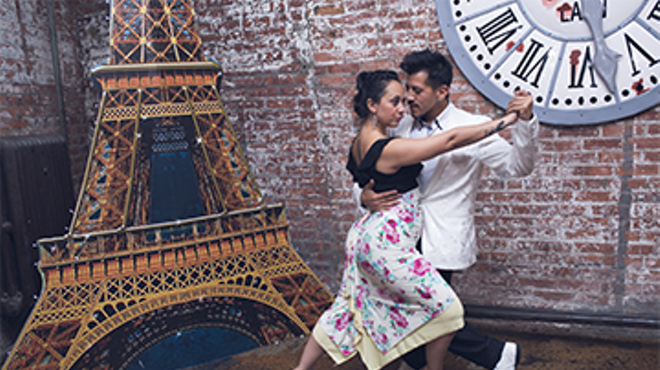The kind of positional change that Alexander explored is not about forcing the body to do something new, which only creates more tension. Rather, it's "an invitation or a wish for the body," explains Steinberg. "You're focusing on the ease of your neck and your whole body, and the relationship of the skull on top of the spine. So you're focusing on good posture and good alignment throughout your body. The Alexander Technique offers a very integrative approach to movement. The idea is to invite peak performance by moving with awareness of the whole body."
Like Madden, Steinberg also came to the practice seeking relief from constant pain. When she was in graduate school for public health in 2000, she developed a debilitating repetitive strain injury; the culprit was a bad computer workstation. Typing had become so painful that she was looking into voice recognition software to write her papers. Then she discovered the Alexander Technique. After taking private lessons twice a week over the course of a few months, the pain lessened and eventually resolved completely. "It was something I continued to do on occasion, even after my pain went away, because it felt so good and my posture improved," she says. "People would comment on it, which was exciting. I also felt less anxious." After she returned to the Alexander Technique a few years later to solve a new problem—foot pain that couldn't be managed with orthotics—Steinberg delved more deeply into the method and trained to become a teacher.
"I hear from a lot of people that they come to the Alexander Technique for one thing, and then they discover a lot of unexpected benefits. So they stick with it," she says. The same was true for herself: One bonus was that the Alexander Technique helped her with a new passion: salsa dancing. "My body could start to move in that whole-body Cuban way, so it allowed me to be a much better dancer." Steinberg even credits the practice for helping her blossom at her day job in public health. "I got a promotion at work, and I think that's partly due to the change in my posture, presence, and vocal clarity. It also helps you regulate your emotions, so you come across as more confident."
Letting Go as a Path to Health
Musicians use it to prevent or treat repetitive strain injuries from hunching over an instrument. Singers call on it to free the breath and unleash the natural power of the voice. But Elizabeth Castagna, an Alexander Technique teacher based in Beacon, came to the method for an unusual reason: She wanted to get pregnant. "It was taking a long time, and I was scared. I was very frustrated and confused," she says. "A friend of mine who's a dancer in New York City said, 'Go to Chloe Wing. She teaches the Alexander Technique, and she'll help you.'" From her first session with the illustrious teacher (Wing passed away in 2013), Castagna was hooked, and she soon started the three-year training to become a teacher herself. She believes that the Alexander Technique, along with nutrition therapy and acupuncture, helped her finally get pregnant during her last year of training.
"There was nothing medically wrong with me, just as there was nothing medically wrong with Alexander when he lost his voice onstage," she says. "There was just something getting in the way. The Alexander Technique is this very subtractive process where you do less, and you begin to feel better." As Castagna got more in touch with her body and with movement, things began to shift. "It took me out of my fight-or-flight response. That's the Alexander Technique at its essence: It helps you find your neutral. My nervous system was feeling clearer; I became happier and freer, and I was able to make better decisions. All the worry I had and the fear—all of that impacts the health of your body and how you feel."
Today Castagna teaches both adults and children, with a mission of bringing the Alexander Technique into the classroom. Along with a colleague, Sophia Jackson, she teaches kids at the Randolph School in Wappingers Falls, which her son attends. "[Jackson and I] have children the same age, and we kept hearing people say, 'Gosh, I wish I knew this stuff when I was a kid.'" Their classes at the Randolph School, for kids ages 5 through 11, teach body awareness through movement games, body traces, and experiential anatomy. "The younger children learn about the skeleton and spine, and how their body is designed to move. The older kids keep a body awareness journal. It's really fun and interactive, and the kids learn to talk about their bodies in a new way." The mind-body aspect enters into the lessons too, as the children begin to connect their emotions and thoughts to the way their bodies feel. "If you help a child or anybody to pause, count to five, and ask their bodies to feel a little less tense, then as their body tone changes, their emotions start to change too."












